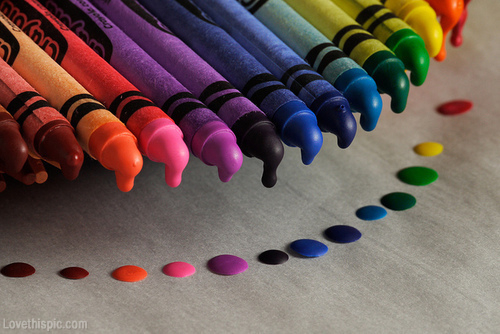Yes, watching paint dry is a pasttime enjoyed by millions every year, but did you know it's even more fun to watch crayons melt? Yes, when a crayon reaches about 120°F, it begins to transition from a solid state to liquid. This can happen even when the air temperatures is much lower due to the radiation of hot sunshine.
"It's not the heat, it's the humidity."
There's no doubt: these next couple of afternoons will be about the hottest we'll see this year. Temperatures pushing 100°F is no joke in this region, thanks to the high dew points and resultant, "feels like" heat index temperatures reaching a dangerous 110°F. While that's enough to melt you, is it enough to melt a crayon?
And you thought watching paint dry was fun! Today? Crayons melting in the sun. LIVE--> https://t.co/xwH3MAhQNz pic.twitter.com/Rs6UjieqdI
— Brooks Garner (@BrooksKHOU) July 27, 2017
Well, yes ... and no. It takes about 120°F to do the job, and with highs, "only" forecast to reach around 100°, our white board may reflect too much solar radiation keeping it just below that crayon-melting threshold. Also, they're perched 6 feet above the hot pavement, which is too high to be further heated by the radiant heat of the black top.
This experiment has been done (successfully) before. Higher air temperatures in the desert, plus a lower crayon position near the rocks put this wax over the edge.
It's hot out there #Vegas! But we had a little fun in the #heat today. This is why you wear light colored clothing! #VegasWeather #NVwx pic.twitter.com/EnVRD6aa7f
— NWS Las Vegas (@NWSVegas) June 22, 2017
Our sister station in beautiful Columbia, SC recently conducted this experiment on their building's roof and had great success. While the air was also close to 100°, the additional heat coming their roof was more than enough.
WATCH: It's so hot outside you can melt crayons! https://t.co/ACxlljbzFW pic.twitter.com/gAUQaEchfm
— News 19 WLTX (@WLTX) July 22, 2017
And here we are, watching something even more exciting than paint dry: crayons melting. Well, they might. Time will tell. If the sunshine can warm these up just a little bit more, they'll drip down over our canvas producing a beautiful art piece to adorn our KHOU 11 lobby.
Follow me on Facebook!



